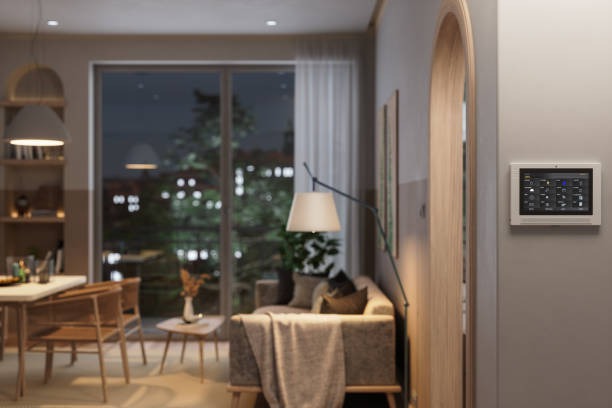In our fast-paced digital world, where everything from grocery shopping to controlling your home’s thermostat can be done with a click or a swipe, finding the right balance between security and convenience has never been more vital. While we relish the ease of modern technology, protecting our personal information and ensuring our safety remain top priorities. So, how do you strike that perfect harmony between these sometimes conflicting priorities? Let’s plunge into the quest for a balanced system tailored to meet both your security needs and your craving for convenience.
1. Understanding Your Security Needs
We all have unique security concerns depending on various factors like location, family size, and lifestyle. Some people may only need minimal protection, while others require extensive systems. The first step is identifying what you truly need. Are you primarily concerned about physical intrusion, or are you more anxious about cyber threats? By understanding your specific needs, you can make informed decisions and ensure your security measures don’t become burdensome.
Assessing Risk Factors
Take a moment to evaluate the potential risks surrounding your environment. Ask yourself some essential questions:
-
What’s the crime rate in your area?
-
How sophisticated are potential cyber threats?
-
Is your home equipped to handle traditional surveillance methods, or do you need more advanced solutions?
Knowing these risk factors can help you choose between different levels and types of security, allowing for the right mix of effectiveness and convenience.
Creating a Security Checklist
Having a checklist can streamline the process of determining what systems you need. Consider including:
-
Physical entry points (doors, windows)
-
Online accounts and sensitive data
-
Areas requiring high surveillance
-
Regular backups for data protection
A checklist not only helps in organizing your thoughts but also ensures that no crucial area is overlooked.
2. Exploring Different Security Systems
The market is flooded with options ranging from simple locks to intelligent surveillance networks. What suits you best? Let’s explore some of these systems to find out.
Traditional Security Methods
For those who prefer simplicity, traditional methods like deadbolts, keyed locks, and wired alarm systems still hold merit. These require minimal technical know-how and are often cost-effective. However, they may lack the sophistication needed to tackle modern threats.
Smart Security Solutions
If you’re tech-savvy and ready to embrace cutting-edge technology, smart systems are the way to go. They offer immense convenience with remote access, real-time notifications, and integration with other smart devices. Be sure to evaluate:
-
Wireless cameras
-
Smartphone-controlled locks
-
Motion-detecting lights
Comprehensive Security Packages
Companies offering comprehensive security and investigation services take the guesswork out of planning. Services such as HSI Security and Investigation Services provide tailored solutions that cover a wide array of needs. Opting for such services ensures that even the most intricate security requirements are met.
Integrating these elements can create a seamless security network capable of handling modern challenges.
3. Balancing Security with Convenience
Finding a balance between high security and everyday convenience isn’t about compromising on either aspect. Here are some ways to navigate this balancing act:
Automation and Integration
Automation can simplify your security management. Features like automatic locking, routine lighting schedules, and remote monitoring can make a big difference. Moreover, integrating your security with smart home systems ensures you have fewer devices to manage.
-
Consider systems that allow for voice commands.
-
Evaluate apps that consolidate all security features into one platform.
-
Enable automated alerts for quick responses.
By automating aspects of your security, you not only enhance safety but also promote ease of use.
Customization and Flexibility
A one-size-fits-all approach rarely works when it comes to security. Look for systems that offer customization:
-
Adjustable settings for motion detection
-
Tailor alerts based on time and location
-
Customizable privacy settings
Having control over these elements ensures that you can adapt your security to different situations without additional hassle.
4. The Role of Professional Security Services
Sometimes, DIY approaches aren’t sufficient. Professional services offer expertise and efficiency that can be crucial.
Consulting with Experts
Enlisting the help of professionals, like a security camera installer in Springfield, can be beneficial if you’re unsure about technical details or covering all security bases. Expertise in installation and maintenance can save you the headache of future complications.
5. Potential Pitfalls to Avoid
Finding the right security system isn’t without its challenges. Let’s explore common pitfalls to avoid.
Over-Reliance on Technology
While technology is a boon, overly depending on it can lead to vulnerabilities. Always have a backup plan and maintain traditional security means as a secondary measure. Ensure that all software is continually updated to avoid cyber threats.
Ignoring Regular Maintenance
Even the most advanced systems require regular checks. Ignoring maintenance can lead to malfunctions or breaches. Develop a routine that includes:
-
Regular updates for software and firmware
-
Periodic check-ups for physical devices
-
Scheduled audits for all security measures
Sticking to such a plan ensures long-term system effectiveness and reliability.
6. Security in Public Spaces
Security isn’t just crucial for private properties; public spaces also play a role in community safety. One example, leveraging Dayton, Ohio security webcams, illustrates how public surveillance can deter crime while maintaining ease for community access.
The Impact of Public Surveillance
Public surveillance can complement personal security measures by adding an extra layer of security. While some may debate privacy concerns, responsible use of public surveillance can be a powerful deterrent against crime.
-
Adds an extra layer of safety
-
Helps law enforcement in investigations
-
Encourages community engagement
Nonetheless, striking a balance in public spaces is equally important to avoid over-surveillance or misuse.
Final Thoughts
Balancing security and convenience is all about finding what works best for you. It involves understanding your unique needs, exploring a variety of systems, and finding the sweet spot that offers safety without compromising on ease. Whether through high-tech solutions or simpler traditional methods, the right system is out there waiting for you to discover it. By remaining informed and proactive, you can build a security network that works seamlessly in your everyday life. Remember, safety and convenience can coexist beautifully in our modern world.



